Articles and Places to Visit
CAISTER HOLIDAY PARK Sat: NR30 5NH
You are here: Home > Articles Index
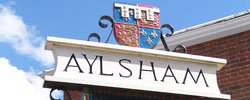
The Market Town of Aylsham
Aylsham is an attractive, traditional Norfolk market town situated beside the River Bure between the cathedral city of Norwich and Cromer. The town is an ideal base to explore this lovely part of Norfolk and is close to the Norfolk Broads, the North Norfolk Hertage Coast, and some large country estates and grand country houses.
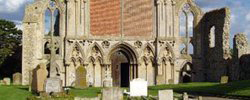
Binham Priory
Binham Priory was founded in 1091 and home to a Benedictine community for 400 years. Tunnels are said to have run between the priory and the church and one to an unknown destination which is said to be haunted by a local fiddler called Jimmy Griggs. After some of the tunnels partially collapsed during a violent storm, Jimmy Griggs went to investigate the damage with his pet dog. Hours later, only the dog was to emerge safely.
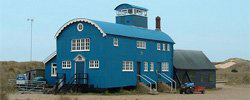
Blakeney and Blakeney Point
Blakeney is one of Norfolk's prettiest villages which was once an important commercial port, and stands on the border of the wide, wild-fowl haunted salt marshes and tidal mudflats of the North Norfolk Heritage Coast. It's been in the care of the National Trust since 1912 as Blakeney National Nature Reserve.
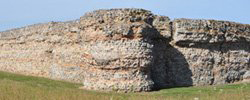
Ruins of Burgh Castle
Burgh Castle was once one of several Roman shore forts built to defend against the Saxon raids on the east and south coasts of Britain. The ruins are just a short distance from Caister-on-Sea and Great Yarmouth in Norfolk.

Caister Car Collection and Caister Castle
The Caister Castle Car Collection at Caister Castle Car Museum is believed to be the largest collection of privately owned motor vehicles in the country. The collection contains more than 120 cars and over 100 bikes which range from the first real car in the world - an 1893 Panhard et Levassor - to a customised 1990's Harley Davidson motorcycle.
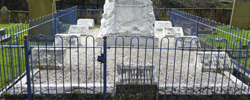
Caister Lifeboat Disaster 1901
The Caister Lifeboat disaster happened on the night of 13 November 1901 when nine crew members lost their lives while attempting to launch the lifeboat 'Beauchamp' in a brave rescue attempt when a vessel was in trouble on the Barber Sands. The weather that night was extremely poor with lashing rain and a strong gale blowing the heavy sea.
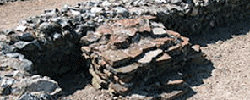
Caister Roman Fort
There were two Roman Saxon Shore Forts in the area - Burgh Castle to the south which overlooked what is now Breydon Water on the Norfolk Broads and guarded the southern part of the estuary, and the much larger Caister Roman Fort which housed the stores, supplies, infantry, cavalry and sailors.
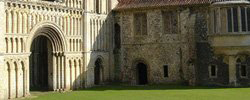
Castle Acre Priory
A great castle fortified in the 12th century by the de Warenne family stands in ruins on its 100ft mound, still strikingly dramatic. Castle Acre Priory was founded in 1089 by William de Warenne the son of the 1st Earl of Surrey following a visit to the great monastery in Cluny in France wth his wife. So impressed were they by its beauty and holiness that they vowed to introduce the Cluniac order of monks to England.
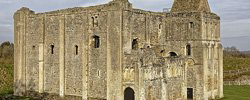
12th Century Castle Rising, Kings Lynn, Norfolk
Castle Rising is a castle of national importance and one of the most famous and well-preserved 12th century buildings in England. Situated near the village of Castle Rising in Norfolk, it is surrounded by 20 acres of massive Norman earthworks and a deer park which merged into the larger Rising Chase with boundaries stretching beyond the horizon when viewed from the keep.
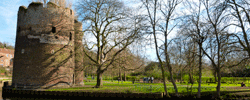
Cow Tower, Norwich
Cow Tower in Norwich is situated on a bend in the River Wensum and is one of the earliest examples of a medieval purpose-built artillery blockhouse. The tower was built to defend a strategic north-eastern point in Norwich's city defences from the possible invasion of French forces and English rebels. It was maintained throughout the 15th century, and played a role in Kett's Rebellion of 1549, when the rebels attacked Norwich, deploying artillery and damaging the tower's parapets.
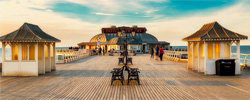
Cromer, Traditional Seaside Resort
Cromer is the most delightful holiday resort and coastal town on the Norfolk coast. Standing high, but sheltered by wooded hills, with splendid sands, cliffs between 100 to 200 ft. high, prettier surroundings than any other Norfolk town, and innumerable places of interest within easy distance of it, its attractions are evident. Cromer grew up fast in the nineteenth century and it is still expanding. The motto "Gem of the Norfolk Coast" is highlighted on the town's road signs.
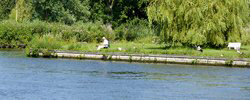
19th Century Fishing on the Norfolk Broads
In the Norfolk Broads and rivers bream, roach and rudd were plentiful, carp were occasionally met with, especially in the River Waveney, tench were sometimes taken, and the capture of large perch was often recorded. Pike were not so abundant as in previous times, but still provided good sport.
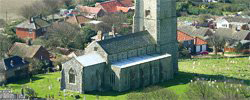
Happisburgh
Happisburgh has a fascinating history and became a site of national archaeological importance in 2010 when flint tools over 800,000 years old were unearthed. This is the oldest evidence of human occupation anywhere in the UK. In May 2013, a series of early human footprints were discovered on the secluded beach at the site, providing direct evidence of early human activity. Sadly, the sea has since washed them away.
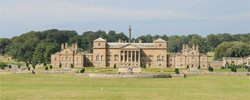
Holkham and Holkham Hall
The small, pretty village of Holkham is located on the North Norfolk Heritage Coast with a vast 25,000 acre estate and the magnificent Holkham Hall. Holkham's beautiful, picturesque and popular beach has recently won the Countryfile Magazine Beach of the Year award, has long white and golden sands backed by pine woods and sand dunes, and is rarely crowded.
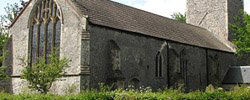
Holy Trinity Church, Caister
The Holy Trinity Church in Caister-on-Sea, Norfolk was originally built in the 14th century and later re-built from the 18th century. It was finally finished in 1894. Some of the most impressive features inside the church include the ornate and richly-carved large medieval font that was brought in from Suffolk by the Victorians in 1902, and the incredible stained glass windows. The oldest window in the church is a lancet dating from the 13th century.
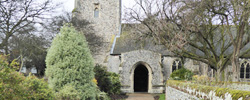
Medieval Churches in Norfolk
Norfolk has more medieval churches than any other county in Britain, and the greatest concentration in the world. Not only are these churches internationally important buildings but they contain hundreds of medieval works of art and craftsmanship and many are noted for their beautiful rood screens, decorated roofs, stained glass windows and bench carvings.
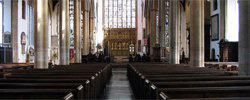
Norfolk's Old Churches
Norfolk is renowned for its great number of fine churches and places of worship, and Norwich (the City of Churches) alone has about sixty of them. The city has often been referred to as the 'City of Churches'. Many of the small Norfolk towns and vllages have churches whose size and architectural beauty are most impressive. Early English work is generally found in the churches of places that have been centres of commercial industry such as Norwich, Great Yarmouth and East Dereham.
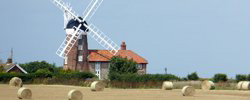
North Norfolk Heritage Coast
The North Norfolk Heritage Coast is an Area of Outstanding Natural Beauty with a unique and varied coastline. The famous award-winning Blue Flag sandy beaches are unspoilt and very family-friendly, and the whole area is a haven for walking, birds and wildlife. The North Norfolk Coastal Path stretches from Hunstanton to Hopton-on-Sea near Caister and Great Yarmouth, and passes through much of North Norfolk's Area of Outstanding Natural Beauty with charming seaside towns and local villages.
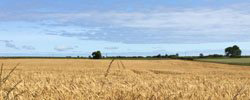
Brief History of Norfolk
A brief history of the county of Norfolk in East Anglia including prehistoric times, the Roman invasion and the middle ages. The kingdom of East Anglia was formed by Norfolk during the Anglo-Saxon times, and Thetford, on the Norfolk and Suffolk border, was one of the most important towns in the county. It had an early cathedral and a mint for making money. The Danes marched on Thetford in 870 and fought with the Christian king Edmund.
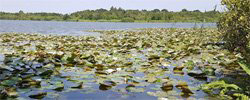
Norfolk's Flora and Fauna
North Norfolk and the coast are home to various types of naturally growing native plants and animal life in the abundant marshland, heathland and sandhills found throughout the county. Norfolk is noted for its native bird population and the great number of birds which either annually or ocasionally visit it. The wild tracts of salt and 'meal' marshes near the sea, and the quiet lagoons and reed-fringed rivers of east Norfolk, are at all times frequented by a greater number of species than are to be found in any other county.
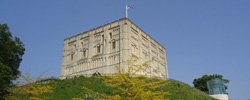
Norwich Castle History
Norwich was an highly important regional capital in the Middle Ages and one of the foremost administration and business centres in East Anglia. It was the largest flint walled town in England at the time and today it still retains many of the historic well-preserved buildings and ruins, and fine evidence of Norman and medieval times. Norwich Castle is now an impressive, Grade I listed ancient monument originally built by William the Conqueror following the Norman invasion.
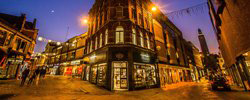
The Old City of Norwich, Norfolk
Norwich has been known throughout history as a fine city and is renowned for its iconic Norman castle, its cathedral and flint city walls, parts of which are still visible today. During the Middle Ages it was the largest walled town in England and still has many well-preserved medieval buildings and remains. Today, it is a bustling and thriving city catering well for the many visitors and tourists who come to see Norfolk's county town and the many historical sights and attractions.
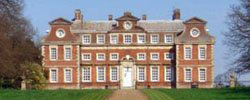
Haunted Raynham Hall
Raynham Hall is a Grade I listed building in Fakenham, Norfolk and was built in the early 17th century by Sir Roger Townshend. It is one of the oldest halls in Norfolk and was greatly influenced by European architecture and style, particularly the Italian contemporary red brick design.
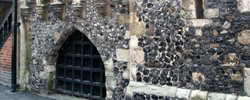
Sarah Martin, Prison Visitor and Reformer
Sarah Martin was born in Caister-on-Sea and was a dedicated prison visitor and reformer, devoted to the inmates of Great Yarmouth's Tolhouse gaol. She also taught children in the workhouse and factory girls in the chancel of St. Nicholas Church in Yarmouth. Sarah died in 1843 and is buried in the Holy Trinity Church graveyard in Caister-on-Sea, plot number 146.

Scroby Sands Wind Farm
Scroby Sands Wind Farm is Britain's largest commercial offshore wind farm and has been supplying the National Grid with energy since 2005. It is situated 2.5 kilometres off the Great Yarmouth and Caister-on-Sea coast in Norfolk and is now a popular landmark and tourist attraction. The area was chosen to take advantage of the shallow waters and offshore sand banks around this part of Norfolk.
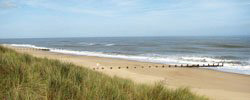
Sea Palling, North Norfolk Coast
Sea Palling is a small village next to Waxham on the North Norfolk Coast, a designated Area of Outstanding Natural Beauty. It is part of the North Norfolk Heritage Coast and a popular tourist and holiday destination. There is plenty of car parking space in the large car park and the village has a regular bus service to/from Norwich.
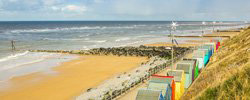
Sheringham, North Norfolk Coast
Sheringham is a traditional seaside town on the North Norfolk Heritage Coast with a Blue Flag sandy beach and was once a busy little fishing village. The town is now made up of two villages - Upper Sheringham which lies a few miles inland, and Lower Sheringham which had a booming fishing industry towards the end of the 19th century. One of the many popular attractions in Sheringham is the preserved North Norfolk Railway which is also known as the 'Poppy Line' and runs to the Georgian town of Holt using mainly steam trains although diesel trains are sometimes used.
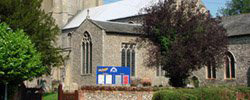
St. Agnes Church in Cawston
St. Agnes Church is a large, magnificent 14th century church in the centre of the village of Cawston in Norfolk. It is consdered one of the finest medieval churches in Norfolk and has a 120 foot bell tower that is visible for many miles around. This historic church has a fine hammer-beam roof and is decorated with fine carved angels, and has a 15th century painted rood screen with its original doors.
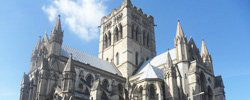
St. John the Baptist Cathedral, Norwich
The Cathedral of St. John the Baptist is a fine example of the great Victorian Gothic Revival. Designed by George Gilbert Scott Junior, it was the generous gift to the Catholics of Norwich of Henry Fitzalan Howard as a thank-offering for his first marriage to Lady Flora Abney-Hastings. The church, which was believed to be the largest parish church in England, was consecrated in 1976 as the cathedral church of the Diocese of East Anglia and became the seat of the Bishop of East Anglia.
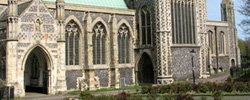
St. Nicholas Church, Great Yarmouth
The Minster Church of St. Nicholas in Great Yarmouth is the largest parish church in England and probably the oldest building in the town. In 1649 the Church of St. Nicholas was divided into three separate parts as the Puritans demanded the use of the building as their church. The Puritans used the Chancel, the Anglican Church had the use of the south isle, and the Presbyterians used the north isle.
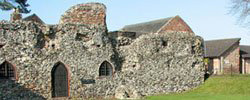
Ruins of St. Olaves Priory
The Augustinian priory in St Olaves was founded by Sir Roger Fitz Osbert of Somerley in the time of Henry III in the early 13th century and named after the 11th century king and patron saint of Norway, Olav. The only parts of the church to survive are the west wall and parts of the north wall. St. Olave's Priory was suppressed in 1537.
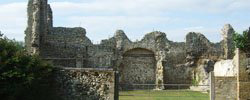
Ruins of Thetford Priory, Norfolk
Thetford Priory (the Priory of Our Lady of Thetford) was founded in early 12th century and was one of the most important and richest monasteries in medieval East Anglia. It was affiliated to the great Benedictine Abbey at Cluny in France and built for the Cluniac order of monks in Norfolk. The extensive surviving remains include the lower walls of the church and cloister, together with the almost complete 14th century gatehouse.
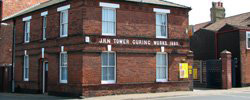
The Time and Tide Museum
Time and Tide: The Museum of Great Yarmouth Life, located in Great Yarmouth, Norfolk, United Kingdom, is set in one of the UK's best preserved Victorian herring curing works and is Norfolk's third largest museum. There is an attractive and spacious courtyard under a canopy of sails to relax in, and historic fishing boats moored alongside a 1950's quayside.
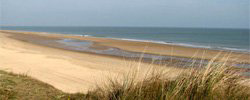
Winterton-on-Sea
Winterton-on-Sea is a small, pretty village on Norfolk's east coast and is perfect for quiet holidays and day-trips. It is an unspoilt former fishing village with a wide, sandy dog-friendly beach which stretches for miles and is often described by visitors as 'picture-perfect' and 'the best local seaside village'. Winterton's historical parish church, Holy Trinity and All Saints, is a magnificent building with the usual Norfolk high tower which dominates the landscape and has traditionally been used as a landmark by mariners.
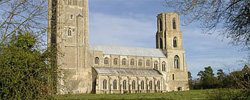
Historic Wymondham
Wymondham Abbey was founded in 1107 by William d'Albini who was the chief butler to King Henry I, and he is buried in the Abbey church before the high altar. The abbey was attached to St Albans, a monastery of the Benedictine friars who were the richest and most influential order in England during the Middle Ages. In July 1549 Robert Kett (or Ket), a Wymondham man, led an army of rebels who started destroying fences that had been put up by wealthy landowners.
INFORMATION
Today is:
Copyright © 2017-2024 caistercaravan.co.uk. All rights reserved.
CaisterCaravan is not responsible for the content of external sites.
Designated trademarks, logos, brands and images are the copyright and/or property of their respective owners.
Great Yarmouth Tourist Office, Maritime House, 25 Marine Parade, Great Yarmouth NR30 2EN
www.great-yarmouth.co.uk
You are now here:
Ref: 21628
17821
